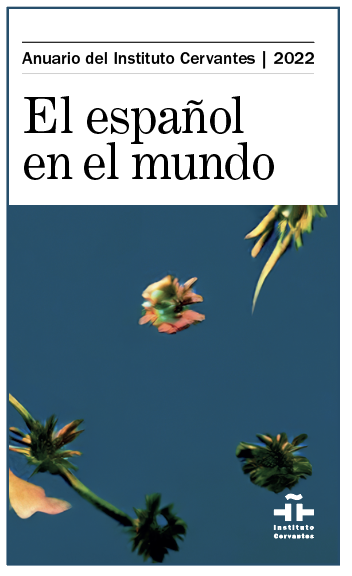

Using Oral History with Students
In the present sociopolitical climate of polarization caused by assaults on the truth, the role of education becomes evident. The significance of historical truth is clarified when we observe the recent resurgence of historical denial and fabrication. However, this is not new—many episodes in history have been obscured for centuries. This is particularly true of BIPOC history, a fact we consider as Black History Month 2023 approaches. The exclusion of Black history from the mainstream, especially from history books, is evidence of systemic racism because it makes Black people invisible and creates the impression that we did not contribute to certain episodes in history. An awareness of this suggests that we, as educators, have a role to play in correcting some of these injustices, if our role is to teach the truth and respect for the truth.
But how is this related to language teaching? I believe that one answer is found in the relationship between oral history and culturally sustaining pedagogy (CSP). Oral history is a form of spoken personal narrative in which an individual is interviewed about how their lived experience has intersected with historical events affecting their family, community, workplace, city, country, or other environment.
In the language classroom, oral history can offer valuable opportunities for students to practice the four skill areas. This can be accomplished through activities in which individuals or small groups of students record their own interviews with members of their families or communities and transcribe the interviews. Students can then deliver oral presentations to the class and play excerpts of their interviews. They can submit written reports in which they analyze and summarize their interviews. The four skill areas are naturally integrated in this approach.
It requires listening for detail when transcribing, and sometimes understanding authentic spoken English in a variety of accents; speaking to ask questions for real communication and reporting on their interviews to the whole class; writing their transcriptions, summarizing, and identifying main ideas; and reading assigned texts for background knowledge before the interview, as well as reviewing and correcting transcriptions afterward.
Some of the additional pedagogical advantages of using oral history with English learners (ELs) and other language students are:
Empowerment
If students interview family members, they see their families’ stories as a valuable element of the curriculum. This dignifies the students, the stories, and the family members.
Students can see members of their families or communities as participants in and observers of history.
Students can begin to see themselves as historians.
Students can feel that they are in control of the communication during the interviews.
When students present their reports to the class, they become teachers for a short time. As such, they are experts on the interviews and the people whom they have interviewed. They see that they can teach and learn from each other.
Less communicative pressure on the student
When students conduct oral history interviews, they mainly need to be concerned with asking the questions rather than providing responses.
Student-centeredness
Although they are guided by the teacher, students can select a subject and then plan, organize, and conduct their interviews.
Oral history supports CSP, which “seeks to perpetuate and foster—to sustain—linguistic, literate, and cultural pluralism as part of schooling for positive social transformation” (Alim and Paris, 2017).
One reason for the importance of CSP at this period in the development of the US—and the world—is the demographic changes in an increasingly diverse country and ever more globalized world (Paris and Alim, 2014). CSP addresses the persistence of Eurocentric hegemony, which does not reflect present demographic realities and perpetuates racism and other injustices.
Oral history can play a very effective role in challenging some educational and social injustices by elevating the cultures and histories of marginalized communities—such as those of many EL students in the US—whose experiences would not otherwise be included in the curriculum. Oral history provides multiple perspectives on history and opportunities for traditionally excluded histories to be included in education at all levels. Such is the case of the history of Black victims of the Nazis. This is an area of history that has remained obscure. The experience of an Afro-Caribbean civilian whose capture and imprisonment in the Nazi concentration camp system is an example of a story that only came to light through oral history.
An Afro-Caribbean in the Nazi Era
In 1940, an Afro-Caribbean civilian sailor was a crewmember on a merchant ship sailing through the Mediterranean. When the ship reached the waters between Tunisia and Sicily, it struck a floating mine and sank. The Italian Navy rescued the crew, at which point Lionel Romney, the Afro-Caribbean sailor, became a political prisoner in Italy. For the next four years, he was held captive and was transferred through a series of internment camps in Italy, until 1944, when he was transferred to the notorious Mauthausen concentration camp in Austria. He remained a prisoner there for almost a year, until the camp was liberated by the US Army at the end of the war, in May 1945.
While at Mauthausen, he was subjected to near starvation and other forms of inhumane treatment. He described how he and other prisoners were humiliated, abused, tortured, and brutalized by the SS.2 One of their objectives was to keep the prisoners in a constant state of fear, intimidation, and physical weakness through starvation and hard labor. Mauthausen was the only camp in the entire concentration camp system that was specifically designated to work its prisoners to death.
Lionel Romney was imprisoned not only by the walls around the camp—lined with high-voltage electric wire—but also by his constant fears. He was always wondering if he would be the next one to die. He routinely witnessed atrocities that traumatized him so deeply that he was virtually silent about the experience for over four decades.
He finally spoke about it during a series of oral history interviews recorded by his daughter, the author of this article. This oral history is the basis of a book, An Afro-Caribbean in the Nazi Era: From Papiamentu to German (Romney-Schaab, 2020), about his experience in the war and my experience visiting Mauthausen, which is now a museum.
Lionel Romney (1912–2004) was from the Dutch side of the Caribbean island of St. Maarten. Although English was his native language, he went to Dutch-medium schools as a child and grew up hearing different languages. He learned Papiamentu3 and Spanish while living in Aruba, Curaçao, and Venezuela in the 1930s. During the war, he learned German and Italian.
As language teachers, it might be interesting for us to note that perhaps the main reason for Lionel Romney’s survival of the concentration camp was that he was multilingual. He spoke English, Dutch, German, Papiamentu, Spanish, and Italian. Prisoners with language skills were often allowed to live longer than others because they could serve as interpreters. The subtitle of my book, From Papiamentu to German, is meant to pay tribute to the role of languages in his survival. The population at Mauthausen was very diverse, with prisoners from every European country and every continent, so my father was able to communicate with many people.
The Power and Value of Oral History
The story of my father’s wartime experience can be instructive in several ways. It is an example of the power of oral history to broaden our perspectives and challenge long-held (mis)perceptions created by incomplete and/or inaccurate narratives. My visit to Mauthausen and my research into the history of that particular concentration camp, as well as the Nazi era in general, are the direct result of the oral history that I recorded with my father. African diaspora peoples have not been in control of our own narrative because it has been appropriated by others through enslavement, colonialism, and other forms of hegemony. However, oral history helps us take control of our own narrative.
Oral history can provide access to history that is not available elsewhere. Because it has the power to elevate traditionally marginalized voices, oral history can have a decolonizing effect on history. Oral history humanizes history by giving a voice to eyewitnesses to historical events. It personalizes history by describing it from the perspective of an eyewitness and putting a human face on it.
Oral history democratizes history because it dignifies the lives of everyday people by giving their stories an audience, and it gives us access to untold and under-told episodes in history. Oral history brings life to history and brings history to life. This is the essence of the relationship between oral history and culturally sustaining pedagogies.
How oral history in English language education, and education in general, supports culturally sustaining pedagogy
CSP cultivates cultural pluralism (Caldera, 2021).
Oral history provides multiple perspectives on history that would probably not have emerged without it. It can provide opportunities for diverse voices to be elevated to the level of visibility and inclusion in the historical canon.
CSP honors students’ home cultures and languages.
Oral history interviews can be conducted in English or the student’s home language. Oral history interviews conducted on subjects pertaining to the history of the student’s heritage community honor the student’s home culture and language by embracing and incorporating them into the curriculum. Oral history is also compatible with, and complementary to, the multigenerational households in which many immigrant EL students live. It can honor and dignify the lived experiences of elder family members.
CSP is anti-colonial and counterhegemonic.
Oral history gives voice to the previously and traditionally voiceless. It counters history traditionally written by the victor as the only valid history. It dignifies orality by providing an audience of listeners to those whose preferred mode of communication may be oral rather than written.
CSP is anti-racist.
Oral history challenges the supremacy of a single interpretation of historical events and roles, which can devalue students’ heritage and history.
I wanted my father’s wartime story to be an example of how everyone has participated in or been a witness to historical events, and how history is shared by everyone, not only famous people. And as an example of the extraordinary experience of an ordinary man, I hope it inspires others to pursue oral histories with their families and encourages teachers to use oral history with their students. “History, despite its wrenching pain, cannot be unlived, but if faced with courage, need not be lived again.”
Maya Angelou, “On the Pulse of Morning”
Notes
BIPOC is Black, Indigenous, and People of Color
The SS, Schutzstaffel, was an elite military corps that guarded the Nazi concentration camps. It was responsible for many of the atrocities committed in the camps.
Papiamentu is a Spanish- and Portuguese-based creole that originated and is spoken in the Southern Caribbean, on the islands of Aruba, Curaçao, and Bonaire.
References
Alim, H. S., and Paris, D. (Eds). (2017). Culturally Sustaining Pedagogies: Teaching and Learning for Justice in a Changing World. Teachers College Press.
Caldera, A. (2021). “What the Term ‘Culturally Sustaining Practices’ Means for Education in Today’s Classrooms.” IDRA Newsletter. www.idra.org/resource-center/what-the-term-culturally-sustaining-practices-means-for-education-in-todays-classrooms
Paris, D., and Alim, H.S. (2014). “What Are We Seeking to Sustain through Culturally Sustaining Pedagogy? A loving critique forward.” Harvard Educational Review, 84(1).
Romney-Schaab, M. L. (2020). An Afro-Caribbean in the Nazi Era: From Papiamentu to German. Independently published.
Mary Romney-Schaab taught ESL to adults in the US and Spain for over 40 years. She has an EdM in instructional media and an MA in TESOL, both from Columbia University. She is interested in how TESOL intersects with diversity, equity, and inclusion (DEI).















